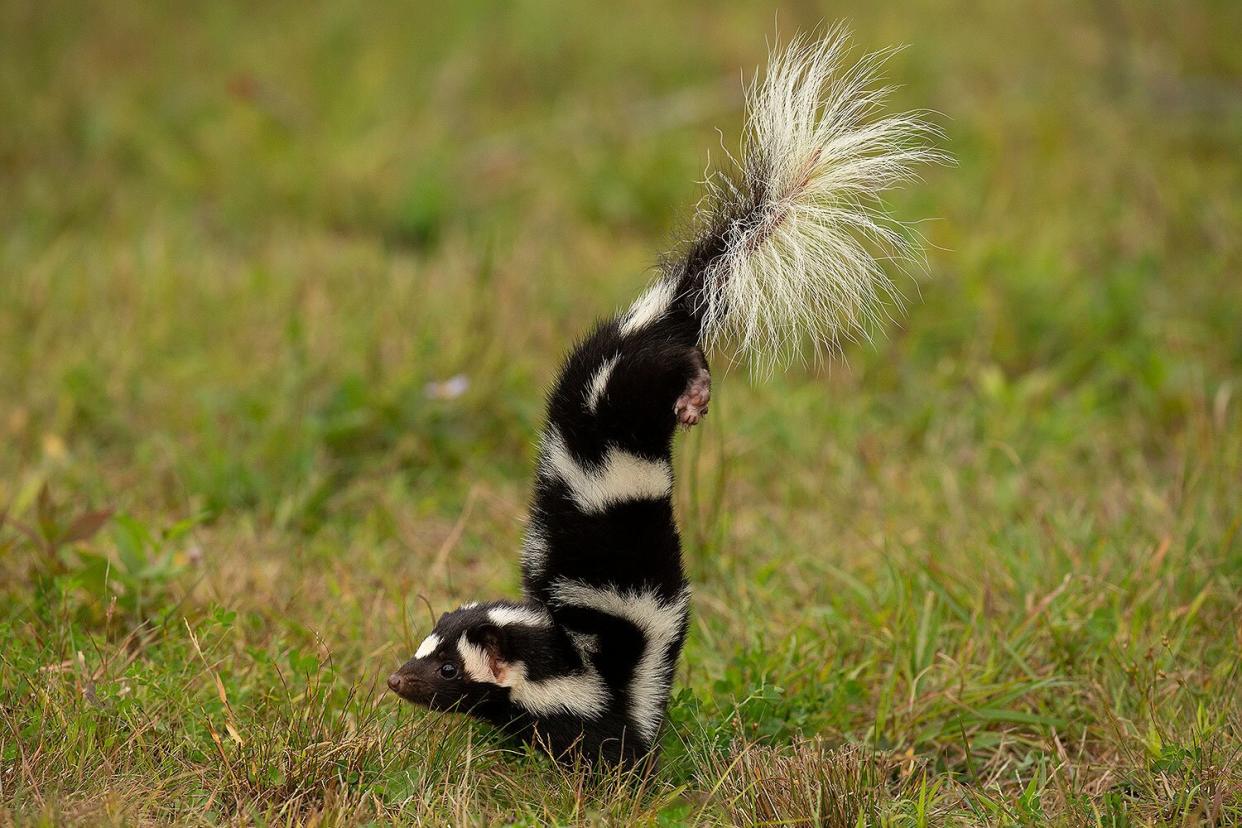Handstanding Spotted Skunks Are Considered the 'Acrobats' Of Their Ever-Growing Species

Getty
There's something special about spotted skunks — and it's not their smell.
Known to experts as the "acrobats" of their species, these cute little critters utilize a unique defense mechanism to protect themselves from suspected predators: a handstand.
"When they're stressed, they bounce up onto their forelimbs and then kick out their hind limbs, puff their tail up, and they actually can walk towards the predator, like basically making them look bigger and scarier," Adam Ferguson, the Negaunee Collections Manager of Mammals at the Field Museum in Chicago, told CNN.
Once locked on to their target, the skunks typically return to their normal stature before releasing their foul-smelling spray.
RELATED: Dallas Zoo Announces First Tiger Cub Birth in 70 Years: 'Incredibly Thankful'
Spotted skunks are more carnivorous than their cousins, seeking prey like bird eggs, lizards, snakes, and rodents. They are solid climbers as well.
A new study published Wednesday in Molecular Phylogenetics and Evolution suggests that seven spotted skunk species currently roam the Earth. The most recent agreed-upon number, however, is four.
Ferguson, who authored the study, called the opportunity to "redraw" the skunk family tree "very exciting."
"Everyone thinks we know everything about mammalian carnivore systematics," said Ferguson.
RELATED: Cougar Kept As Pet in NYC Apartment Surrendered to Sanctuary, Officials Say Owner Shed 'Tears'
In addition to skunks trapped in Mexico by Ferguson, researchers relied on specimens in museums to conduct the study.
Fellow study author Molly McDonough, a biology professor at Chicago State University and research associate at the Field Museum, told CNN in a statement that she managed to extract DNA from museum samples from over 100 years ago.
"The study wouldn't have been possible without the museum specimens we had," Ferguson told the outlet. "The only reason we were able to get sequences from the Yucatan were museum specimens that were collected 60 or 70 years ago."
RELATED: Mountain Lion Killed After Attacking 5-Year-Old Boy in the Front Yard of His Calif. Home
Next, researchers plan to look into spotted skunks' reproductive habits. Though they tend to breed in the fall, the mammals typically give birth in the spring.
"It just sits in suspension for a while," Ferguson said. "We want to know why some species have delayed implantation, and others don't, and figuring out how these different species of skunks evolved can help us do that."

